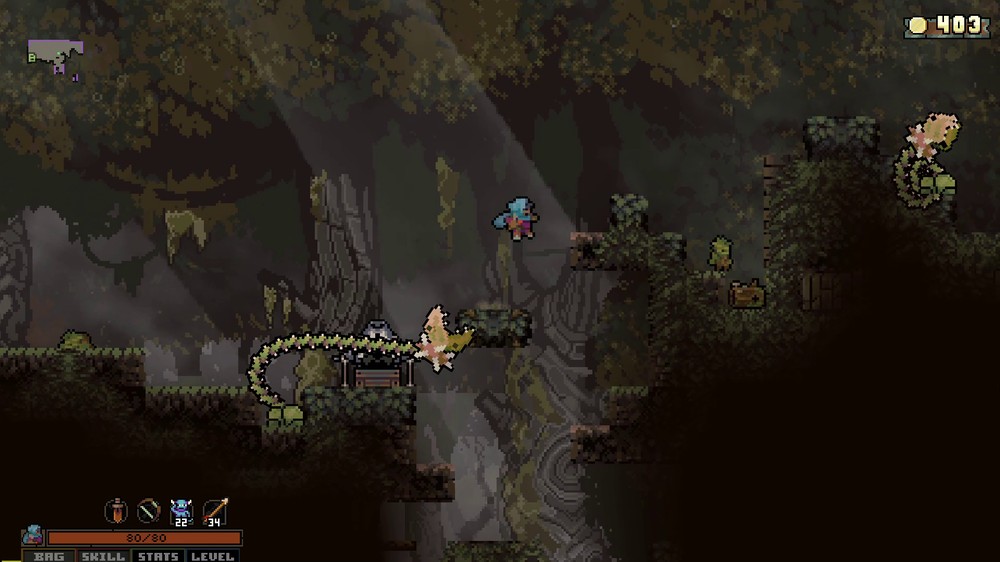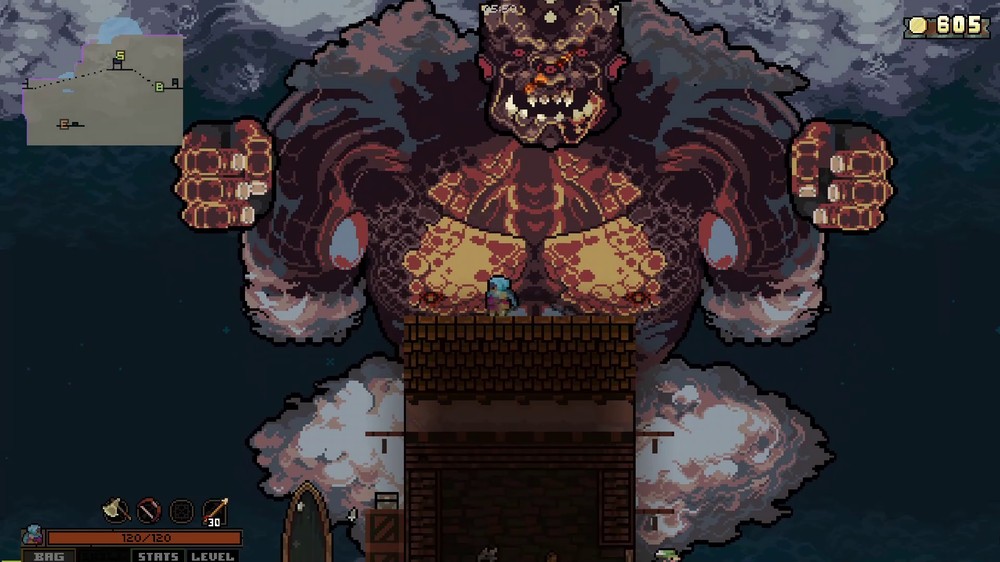Roguelike or Roguelite?
I must admit, I’ve never really understood the minor differences that determine whether a game qualifies as one or the other, and a basic Google search will prove that most seem to have the same difficulty. Regardless, the cult classic Vagante – originally released on the PC way back in 2014 by the three-person team Nuke Nine – is one seriously brutal nod to the early days of gaming when the D&D tabletop RPG gameplay evolved into dungeon crawling videogame RPG’s like The Bard’s Tale and Gauntlet. After six years Vagante has made its console debut, and this is one game fans of the genre will not want to miss.
 I’m going to let you know right now that these games are not my forte. I tend to find them tedious and frustrating. But I went into Vagante with a mostly-open mind, and I am glad that I gave it a shot. Just please forgive me if I don’t cover every bit of RPG minutia to the detail you might be expecting, as I pretty much bumbled my way through as much as I could muster until it became simply too difficult to keep going.
I’m going to let you know right now that these games are not my forte. I tend to find them tedious and frustrating. But I went into Vagante with a mostly-open mind, and I am glad that I gave it a shot. Just please forgive me if I don’t cover every bit of RPG minutia to the detail you might be expecting, as I pretty much bumbled my way through as much as I could muster until it became simply too difficult to keep going.
Vagante is a class-based RPG, with three classes available at the start – Rogue, Mage, and Knight. With an additional – Wildling – available later in the game. Each class has its own unique attributes for attack speed, power, magic, and range.
 The Rogue is the master of stealth and acrobatics, quick dagger attacks and archery. The Knight is armed with a broadsword for close combat, and is tough as nails against enemy attacks. The Mage is all about the magic – casting spells to obliterate multiple enemies at long distances. And the Wildling – well true to their name they are the berserkers of the game and use their fists to pummel enemies into submission. Thankfully, there are plenty of weapons and spells scattered about that serve to fill the gaps rather quickly – resulting in knights who can cast some seriously wicked spells and mages who can wield a broadsword with the best of them.
The Rogue is the master of stealth and acrobatics, quick dagger attacks and archery. The Knight is armed with a broadsword for close combat, and is tough as nails against enemy attacks. The Mage is all about the magic – casting spells to obliterate multiple enemies at long distances. And the Wildling – well true to their name they are the berserkers of the game and use their fists to pummel enemies into submission. Thankfully, there are plenty of weapons and spells scattered about that serve to fill the gaps rather quickly – resulting in knights who can cast some seriously wicked spells and mages who can wield a broadsword with the best of them.
The game quite literally dumps the chosen character off into what seems like a large open environment with two platforms and some bouncing square rocks. I’m embarrassed to say it took me about fifteen minutes of trial-and-error to realize that there was absolutely nothing to be accomplished in that screen, other than to walk to the front of the cave and push up on the controller to enter the dungeon – you live you learn!
 Once inside the procedurally-generated catacombs, the game treats you to a quick tutorial on the mechanics of the game – how to jump and climb, how to drop down levels, how to open boxes, how to attack enemies, how to avoid spikes, how to revive health – all the standard stuff. Shortly thereafter you are thrown into the thick of battle with a multitude of monsters to warm up your skills.
Once inside the procedurally-generated catacombs, the game treats you to a quick tutorial on the mechanics of the game – how to jump and climb, how to drop down levels, how to open boxes, how to attack enemies, how to avoid spikes, how to revive health – all the standard stuff. Shortly thereafter you are thrown into the thick of battle with a multitude of monsters to warm up your skills.
From there, it becomes a traditional slog through the dungeons in search of a rumored treasure hidden within. Throughout the game, characters are leveled-up sorta-semi-permanently using powerups and potions gained in their travels. I say semi-permanent because the only thing truly permanent that I found in Vagante is death. Yes, it’s old school die and you have to start over. And there are certain traps which dole out insta-death, which can be frustrating as hell when you finally find yourself on a good run. The developers tout “fair” enemies, but in my experience that was not always the case.
 Vagante can be played cooperatively with up to 3 friends, either local or online. I didn’t have the opportunity to experience co-op play so I cannot really speak to it, but I would assume having friends along for the ride could help – albeit things could get a bit confusing with four player and enemies crammed in such a small gameplay area.
Vagante can be played cooperatively with up to 3 friends, either local or online. I didn’t have the opportunity to experience co-op play so I cannot really speak to it, but I would assume having friends along for the ride could help – albeit things could get a bit confusing with four player and enemies crammed in such a small gameplay area.
In terms of presentation, Vagante delivers a pretty amazing experience. The visuals are old-school side-scrolling pixel-art similar to early Vagrant Hearts or the more recent retro title Spleunky. While this stuff usually doesn’t float my boat, in the case of Vagante it totally works. There’s a lot of detail hidden in the backgrounds that becomes illuminated as the character moves about with his/her torch that give the game a claustrophobic feel that is fitting of a game taking place deep within the earth.
 But where Vagante’s presentation really shines is in the incredible musical score composed by Nashville musician Sam English. It is some of the best original electronic-orchestral music I’ve heard in the last decade of gaming, and it really sets a beautiful tone to the gameplay. I highly suggest you search up the soundtrack on SoundCloud and get a sample of what you’re in for.
But where Vagante’s presentation really shines is in the incredible musical score composed by Nashville musician Sam English. It is some of the best original electronic-orchestral music I’ve heard in the last decade of gaming, and it really sets a beautiful tone to the gameplay. I highly suggest you search up the soundtrack on SoundCloud and get a sample of what you’re in for.
I made no bones about it earlier – Rougelike or Rougelite – whatever you call it, this is not a genre of gameplay I typically enjoy. But I can honestly say I did enjoy most of the time I spent with Vagante – until, of course, I gave up because it got just too darn hard and overwhelming. But if you are a gamer that likes this style of game, and you like slogging through caverns and building-up characters over and over, I would highly recommend giving Vagante at try. For $15, what do you have to lose?











